Geoff Nicholson's Blog, page 25
February 21, 2020
WALKING AND RECOLLECTING IN SOME VERSION OF TRANQUILITY
I went for a walk in Colchester. I hadn’t been there in years, not since I spent a year at the university studying European drama and making myself unemployable. Inevitably some parts of the city seemed very familiar and surprise, surprise some things had changed out of all recognition.This piece of sculpture on the High Street was a great addition, ‘Woman (walking)’ by Sean Henry – that’s a good, snappy, unpretentious title you’ve got there, Sean.
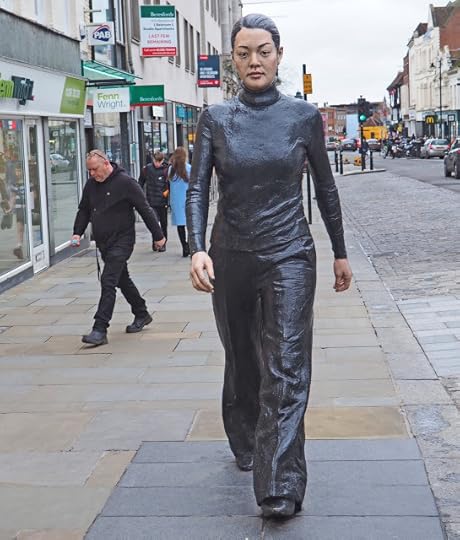
And I walked in Castle Park, the grounds of Colchester Castle, a fine castle however you look at it, even if you’re not all that interested in castles.
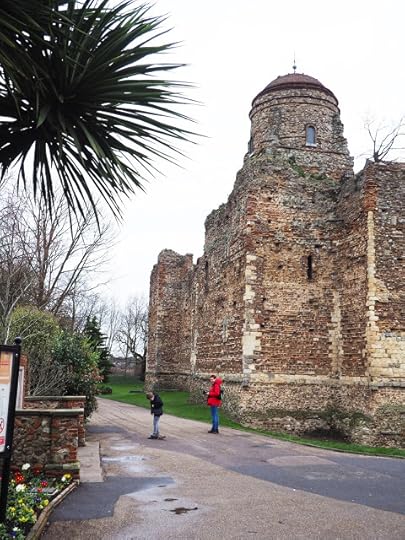
The gardeners were out planting.
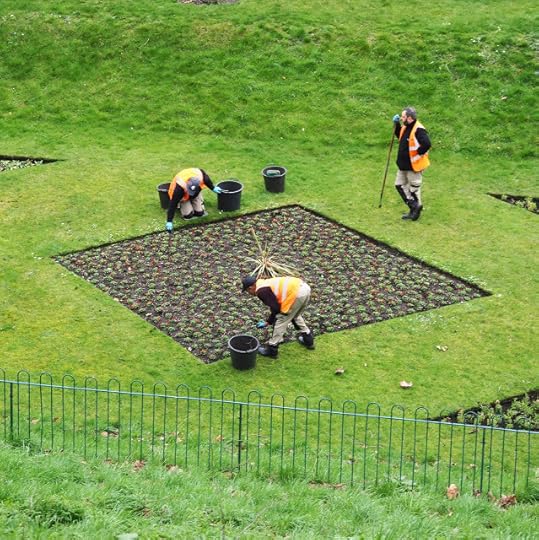
And I suppose they probably plant all year round, because all at once I came upon a crowd (I’m not sure I’d really call it a host) of daffodils, and I don’t honestly know if there were ten thousand of them - counting daffodils is a tricky business - but there were certainly plenty of them.

And then, all at once, again, I came upon an obelisk. To be fair I knew it was in the park somewhere but I hadn’t actually expected to find it.
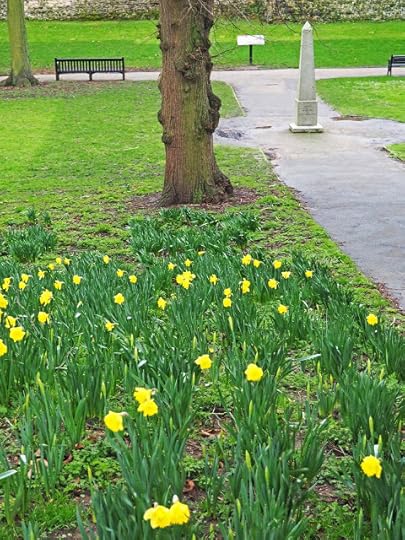
It’s not that big as obelisks go but it’s an interesting one. It was erected in 1892 by Henry Laver, a local dignitary, when the park was opened. It commemorates the death by firing squad on that spot in 1648 of two Royalist commanders: Sir Charles Lucas and Sir George Lisle, after the siege of Colchester.
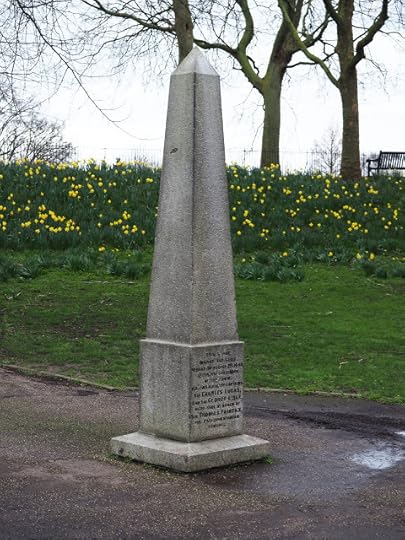
Both Lucas and Lyle are regarded as Royalist martyrs in some quarters. Lucas left a manuscript titled Treatise of the Arts of War, but it was written in cipher and was never published, which I suppose is understandable. You don’t want the polloi knowing all the arts of war, on the other hand it does rather cut down your readership.
Henry Laver was an Alderman, a Justice of the Peac, and a Fellow of the Society of Antiquaries, which looked like this. He was also the author of The Colchester Oyster Fishery: Its antiquity and position, method of working and the quality and safety of its products, which looks like this:
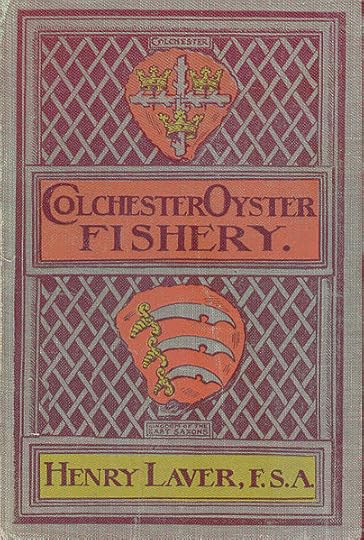


And I walked in Castle Park, the grounds of Colchester Castle, a fine castle however you look at it, even if you’re not all that interested in castles.

The gardeners were out planting.

And I suppose they probably plant all year round, because all at once I came upon a crowd (I’m not sure I’d really call it a host) of daffodils, and I don’t honestly know if there were ten thousand of them - counting daffodils is a tricky business - but there were certainly plenty of them.

And then, all at once, again, I came upon an obelisk. To be fair I knew it was in the park somewhere but I hadn’t actually expected to find it.

It’s not that big as obelisks go but it’s an interesting one. It was erected in 1892 by Henry Laver, a local dignitary, when the park was opened. It commemorates the death by firing squad on that spot in 1648 of two Royalist commanders: Sir Charles Lucas and Sir George Lisle, after the siege of Colchester.

Both Lucas and Lyle are regarded as Royalist martyrs in some quarters. Lucas left a manuscript titled Treatise of the Arts of War, but it was written in cipher and was never published, which I suppose is understandable. You don’t want the polloi knowing all the arts of war, on the other hand it does rather cut down your readership.
Henry Laver was an Alderman, a Justice of the Peac, and a Fellow of the Society of Antiquaries, which looked like this. He was also the author of The Colchester Oyster Fishery: Its antiquity and position, method of working and the quality and safety of its products, which looks like this:


Published on February 21, 2020 08:45
February 19, 2020
LEMMY TAKE YOU BY THE HAND

The streets of London are paved with fruit, which has been left out in the rain. (Macarthur Park reference, should some of you young 'uns have missed it.)

Published on February 19, 2020 11:36
February 12, 2020
ROCKING ON

I like rocks. I don’t know much about them but when I’m out walking and I see a rock at my feet and I like the look of it, I tend to pick it up.
Of course the question of what it means to ‘like the look of a rock’ is a strange one, and I’ve thought about why one rock appeals more than another. It’s obviously got something to do with general aesthetics but it’s also about personal taste (I’m especially fond of flint and obsidian) and maybe it’s also to do with pareidolia - everybody likes a rock that looks like an animal or a face, or not wholly like a rock.
No doubt John Ruskin had a lot of say about it. These are some of Ruskin’s rocks, though not picked up while walking, as far as I know.
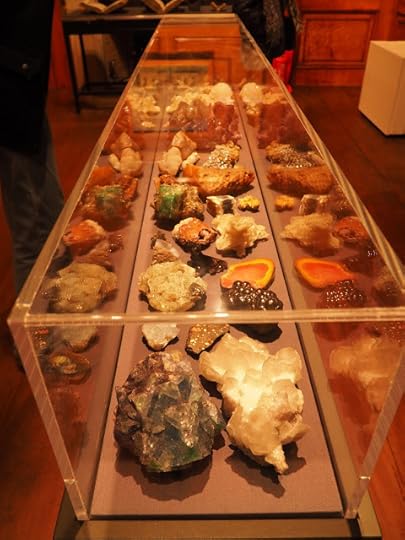

Now, if you’re on a long walk and you pick up every rock you like the look of you can end up carrying half a ton of geological samples in your pockets and rucksack. So my technique (call it that) is to pick up the first rock I like and carry it with me until I see another rock that lI think looks better, then I pick that one up and drop the first. It’s not a very sophisticated process.
I never made any great claims for the originality of this practice but I also never met anybody else who did it until I was in Quartzsite, Arizona, one hell of a town, a centre for rock and fossil hunters, and depending on the day and time of year you may find any number of dealers there selling rocks, most of which I think they’ve just picked up in the desert. I understand this is perfectly legal in those parts, though by no means everywhere in America.

Buying a rock from a dealer always seems a bit of a cheat, but of course if the dealer is a hands on kind of a guy he has all the time in the world to go hunting for them, whereas I’ve only ever been a tourist in those parts. So the dealer has much better stuff. And I got talking to one of the dealers, and without any prompting from me he said sometimes when he was walking for business rather than pleasure, his method was just the same as mine – go out there, pick up a rock, keep it until you find a better one, then swap it. I can’t say I felt like I’d found a kindred soul but it was somehow cheering.
And then, blow me down, I was reading Richard Long’s Walking the Lineand there it is on page 53, a text piece titled “Walking Stones.” This is what it looks like:
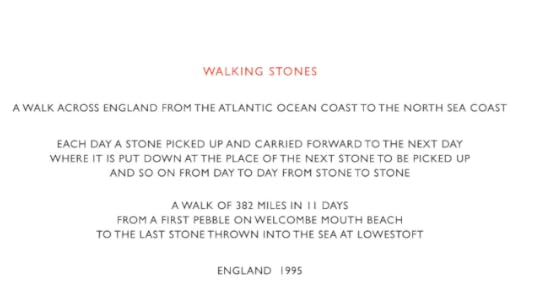
Walking 382 miles in 11 days strikes me as pretty good – more than 35 miles a day, but I do wonder how he selected the stones he picked up. Was it based on aesthetic choice or random selection or something else?
Of course Long ended up with no rocks in his pockets or rucksack. I, on the other hand, always end up taking at least one home with me. In due course I get rid of them. Over the years I must have got dispersed hundreds, some of them a very long way from where they started, but a few always remain. This is the current selection lined up in the Nicholson atelier:
(picture coming soonest)
It looks vaguely arty, but it’s no Richard Long.
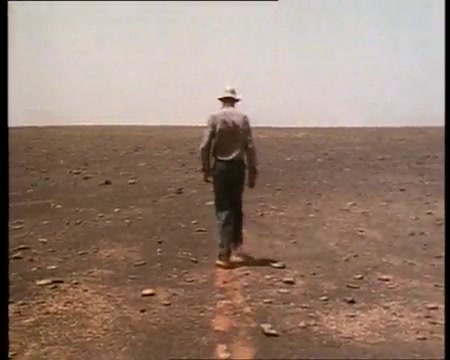

Published on February 12, 2020 11:20
February 3, 2020
SPEKE MEMORY
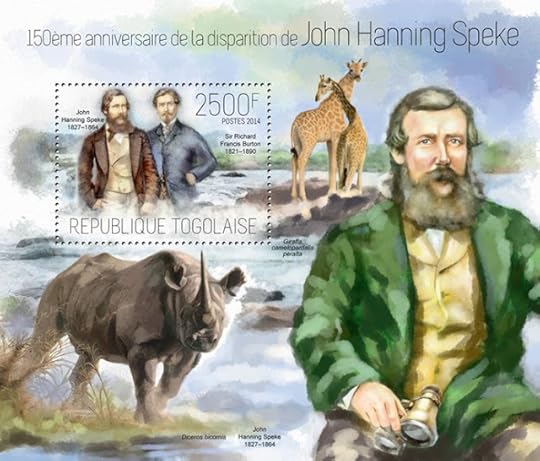
If you’re looking for a catchy but modest (possibly faux-modest) title for your travel book then you could do a lot worse than A Walk Across Africa, James Augustus Grant’s 1864 volume, especially since it has the knockout subtitle Or, Domestic Scenes from My Nile Journal.
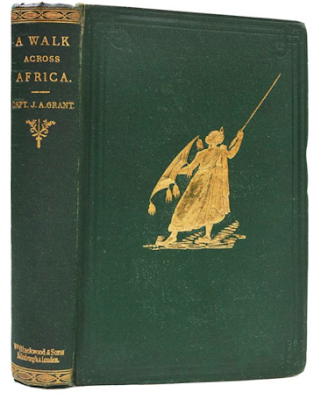
Grant’s book tells in part the story of his expedition with John Hanning Speke in search of the source of the Nile at Lake Victoria: they found it, more or less.
Speke was a profound, and in some sense perhaps ultimately a mortal, enemy of Sir Richard Francis Burton. They too travelled together in search of the source of the Nile, and failed to find it, more or less.

The two men loathed each other. Speke shot himself (accidentally? we don’t know) the day before he was about to have a public debate with Burton. This is Speke being chased by Somalis, on an earlier expedition with Burton.

There’s a tendency, and I share it, to find yourself ‘supporting’ either Speke or Burton as though they were opposing football teams, and I’m totally with Burton, even if I accept that at this point in history it’s a fairly meaningless kind of support.
Burton’s great memorial is his famous tomb in Mortlake in the shape of a Bedouin tent.
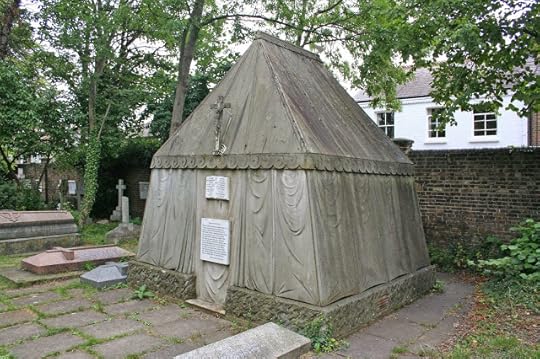
Speke’s memorial, which I only recently discovered, is an obelisk made of Aberdeen red granite, which is located in Kensington Gardens, not a million miles away from the Peter Pan statue. A plaque set in the ground tells us the memorial was sponsored by Sir Roderick Murchison of the Royal Geographical Society, and paid for by public subscription.
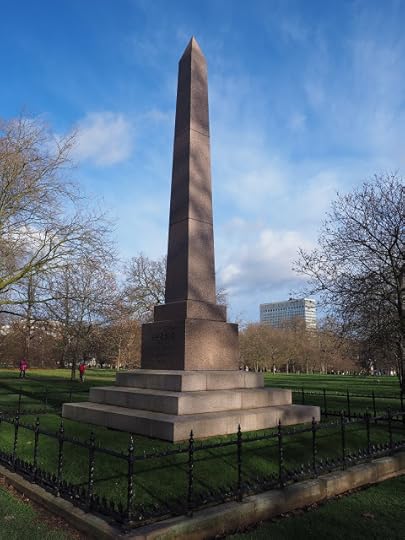

My unscientific observation when I went there is that the people who walk through Kensington Gardens, often with their dogs, pay very little attention to the Speke obelisk, although one or two of them did pay attention to me because I was looking at it with such intensity, and taking photographs, and they probably thought I was a nutter, so they walked on that much faster.
The memorial, as all true obelisk fans with observe, is not a true obelisk since it’s in three parts. A true obelisk is made from a single piece. I suppose that Aberdeen granite doesn’t come in big enough chunks.

Published on February 03, 2020 08:19
January 30, 2020
A LONDON BRIDGE
I’ve said it before so it must be true, that sometimes you want to walk in certain places or along certain streets just because you like the name – Ducksfoot Lane, Spanker’s Hill, Camera Place.

And so it was last week with Wormwood Street (no connection with Wormwood Scrubs), close to Liverpool Street. The London Encyclopedia (Weinreb and Hibbert) says the name derives simply from the fact that wormwood used to grow there. It also leads into Camomile Street, which again gets its name because of the historic presence of wild camomile. But I had another reason for walking down Wormwood Street - it’s currently the site of a sculpture or installation or anyway a work of art titled ‘Bridging Home, London’ by the Korean artist Do Ho Suh.
Wormwood Street usually looks like this, crossed by a pedestrian walkway, or even, in architect-speak, a pedway.

But now, thanks to Do Ho Suh, it looks like this:

The added structure is a representation of his childhood home, a traditional Korean house, and I’m sure the vertiginous angles say something about the instability of culture and tradition, about the inevitably temporary existence of houses, of all architecture, and no doubt about the insecure nature of the immigrant experience. But it’s also fun, like seeing an alien but unthreatening spacecraft that’s landed in the middle of the city. It’s also quite moving in its apparent precariousness. I say apparent because I assume the health and safety folks have been in to make sure its not going to free itself and fall into the traffic.
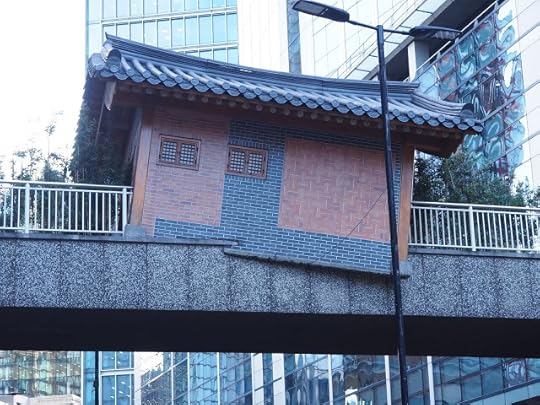
As far as I could see there was no way of getting up to that walkway for a closer look at the ‘house’ and certainly I didn’t see anybody up there. Perhaps the work of art is just too unstable.
I’d never heard of Do Ho Suh, and I assumed he was some bright young spark who’d just got a break, but that’s not the case. He’s in his late 50s, online sources tell me he has a BA and MA in Fine Arts from Seoul University, another BA in painting from the Rhode Island School of Design, another Master of Fine Arts in sculpture from Yale. He has work in collections at the Guggenheim, the Museum of Modern Art, and the Whitney in New York, atMOCA in Los Angeles, The Tate in London; and the Museum of Contemporary Art in Tokyo – among others.
According to Wikip he currently has live-in studios in London, New York City, and Seoul. This of course is nothing to hold against him, but it does suggest that his version of the immigrant expression is more singular than most.

Do Ho Suh is not a walking artist but he does create works that you can not just walk around, but also walk inside. Though not, it seems, in Wormwood Street.

And so it was last week with Wormwood Street (no connection with Wormwood Scrubs), close to Liverpool Street. The London Encyclopedia (Weinreb and Hibbert) says the name derives simply from the fact that wormwood used to grow there. It also leads into Camomile Street, which again gets its name because of the historic presence of wild camomile. But I had another reason for walking down Wormwood Street - it’s currently the site of a sculpture or installation or anyway a work of art titled ‘Bridging Home, London’ by the Korean artist Do Ho Suh.
Wormwood Street usually looks like this, crossed by a pedestrian walkway, or even, in architect-speak, a pedway.

But now, thanks to Do Ho Suh, it looks like this:

The added structure is a representation of his childhood home, a traditional Korean house, and I’m sure the vertiginous angles say something about the instability of culture and tradition, about the inevitably temporary existence of houses, of all architecture, and no doubt about the insecure nature of the immigrant experience. But it’s also fun, like seeing an alien but unthreatening spacecraft that’s landed in the middle of the city. It’s also quite moving in its apparent precariousness. I say apparent because I assume the health and safety folks have been in to make sure its not going to free itself and fall into the traffic.

As far as I could see there was no way of getting up to that walkway for a closer look at the ‘house’ and certainly I didn’t see anybody up there. Perhaps the work of art is just too unstable.
I’d never heard of Do Ho Suh, and I assumed he was some bright young spark who’d just got a break, but that’s not the case. He’s in his late 50s, online sources tell me he has a BA and MA in Fine Arts from Seoul University, another BA in painting from the Rhode Island School of Design, another Master of Fine Arts in sculpture from Yale. He has work in collections at the Guggenheim, the Museum of Modern Art, and the Whitney in New York, atMOCA in Los Angeles, The Tate in London; and the Museum of Contemporary Art in Tokyo – among others.
According to Wikip he currently has live-in studios in London, New York City, and Seoul. This of course is nothing to hold against him, but it does suggest that his version of the immigrant expression is more singular than most.

Do Ho Suh is not a walking artist but he does create works that you can not just walk around, but also walk inside. Though not, it seems, in Wormwood Street.

Published on January 30, 2020 05:42
January 27, 2020
PHOTO WALKING

Eureka. I’ve been looking for the above photograph for years. I knew it existed - I’d seen it often enough before - and I knew I had a copy, but it had gone missing somewhere in the choatic arrangement of files, papers and photographs that make up the Nicholson archive. Then, yesterday suddenly while digging around in search of something else, there it was.
It shows my Aunty Daisy and my Nan, in Sheffield walking along what is recognizably Fargate, across the road from the Peace Gardens. Young cousin Margaret is in there too, between them, but apparently not wishing to be seen.
The picture comes from the golden days of a certain kind of street photography when you might be walking along and a ‘professional’ photographer would pop out and take your picture, hand you a ticket, and then later you’d go to his kiosk, see the picture on display and if you liked it you’d buy a copy. Hence it would be possible to have quite a few pictures of yourself walking. Incidentally, this family picture has a very pale ink stamp on the back that says, I think, ‘One Snap.’
I’m sure these street photographers operated mostly at the seaside, when people were in holiday mood, and in that Sheffield photograph my aunt Daisy and my Nan don’t seem to be in holiday mood; they’re obviously out shopping, and I do wonder what Daisy’s got in that paper parcel under her arm. Nan's got one too, bit it's smaller. But for whatever reason they decided they wanted a copy of the picture.
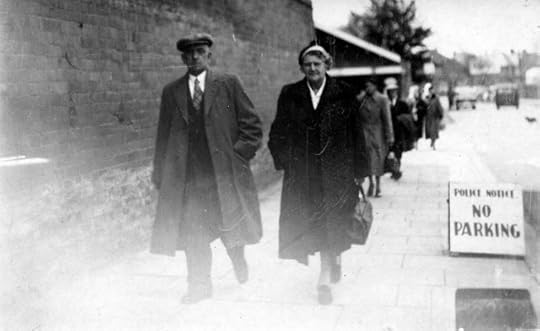
Above is another ‘walking photograph’ which I’ve always known the whereabouts of (or at least the whereabouts of a scan), this one showing my grandparents, though I don't know the story behind it.
I don’t know where they are, but they’re quite dressed up so it must be some kind of occasion. It could be at the seaside though somehow I don’t think so. I’ve always thought they might be at the races in Doncaster – it was the kind of thing they did - but I’ve no hard evidence for that.
But it does remind you how few photographs we have these days of people walking. When the camera or phone comes out, people stop and pose. They might be in restaurants, on the beach, in the living room, even the bedroom, but chances are they aren’t walking, unless of course they think of themselves as ‘walkers.’ In which case …

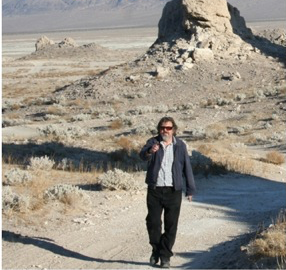

Published on January 27, 2020 09:52
January 23, 2020
MORE OBELISK WALKS
My obelisk ‘thing’ continues: let’s call it an interest rather than an obsession at this stage. It ties in with walking, of course. I don’t in general go walking in search of them, but if in the course of a walk I happen to see one, then my heart leaps up.
This in turn partly ties in with my love of graveyards (I don’t think I’m a full-on taphophile). If I’m walking and I see there’s a cemetery nearby I tend to walk through it, and although I don’t necessarily expect to find an obelisk there, it’s surprising how often I do. As in this cemetery attached to Saint Saviour’s Church in Walthamstow:

Or in the churchyard at Stithians in Cornwall:

I came across this war memorial obelisk in Manchester (I was there for the cricket):
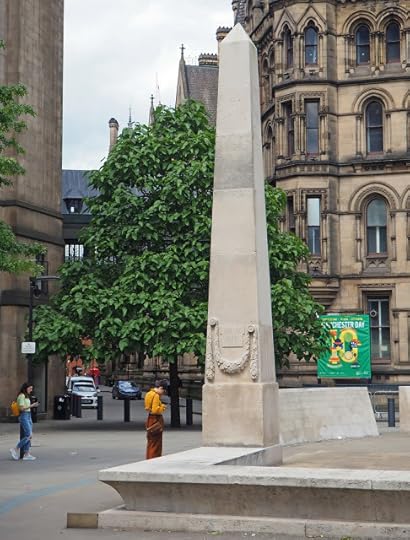
And a different kind of war memorial obelisk in Chelmsford:
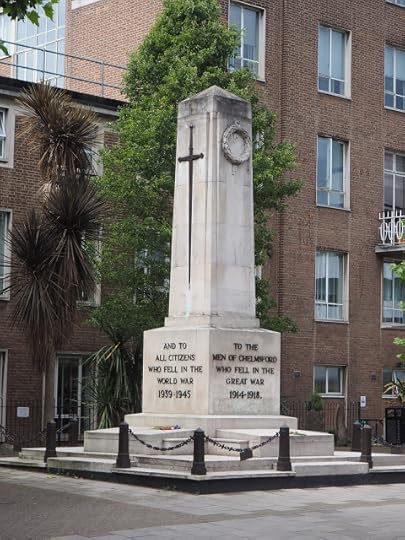
If you’re visiting Colchester General Hospital you’ll find this rather inscrutable one right by the bus stop:
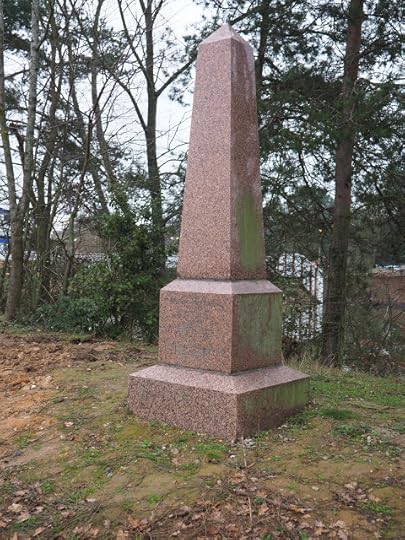
And if, by any chance, you’re in Bristol and you walk down to the Arnos Vale cemetery, you may well think you’ve hit the mother lode, obelisk central:



And just last week I saw this one in Circus Place, adjacent to Finsbury Circus in London.

It’s quite an eye-catching beast, and it commemorates George Dance the younger (1741 - 1825), an architect, who in 1768, so while he was still in his twenties, became Architect and Surveyor to the Corporation of London, a job he inherited from his father, George Dance the elder.
Now, a true connoisseur of obelisks will look at the Charles Dance memorial and protest that it isn’t really an obelisk at all, because it lacks a pyramidion – the pointed bit at the very top,

That’s perfectly true, and there’s a good reason for it. The monument is in fact a sort of ventilation chimney – those indents on the shaft are in fact air holes. Down below street level there is, apparently, a gas storage facility and the passage of air in and gas out prevents explosions, which is obviously a good thing. But that also means that this obelisk is hollow – so again, it’s not an obelisk at all, since a true obelisk has to be solid and made from one piece of stone. Still, you can’t be too sniffy about these things.
Nor can you be sniffy if you’re on the train from Manningtree to London, somewhere north of Cherwell Heath, and you look out of the window and see a large white obelisk flashing by.
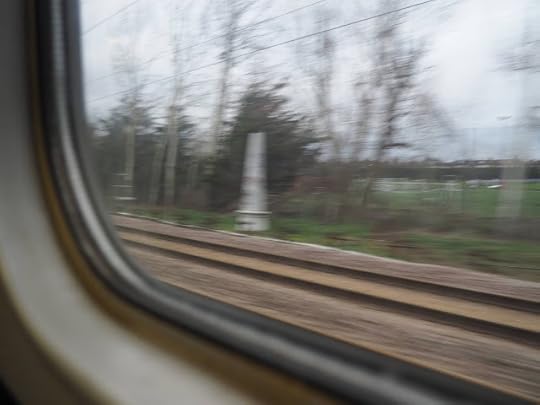
They’re scattered all over the place if you know where to look, and they mark the points at which duty was payable on coal being taken into London by rail. An obelisk seems rather a grand marker for such a workaday activity, and they do come in various kinds and sizes, some much grander than others, and some not obelisks at all.
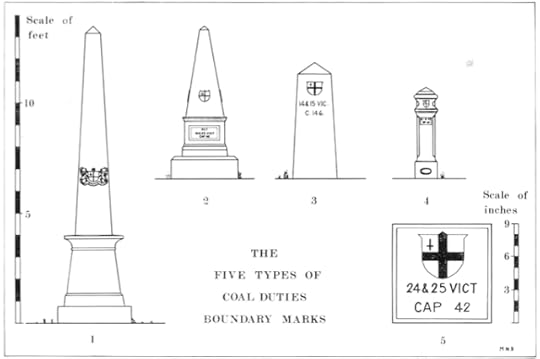

This in turn partly ties in with my love of graveyards (I don’t think I’m a full-on taphophile). If I’m walking and I see there’s a cemetery nearby I tend to walk through it, and although I don’t necessarily expect to find an obelisk there, it’s surprising how often I do. As in this cemetery attached to Saint Saviour’s Church in Walthamstow:

Or in the churchyard at Stithians in Cornwall:

I came across this war memorial obelisk in Manchester (I was there for the cricket):

And a different kind of war memorial obelisk in Chelmsford:

If you’re visiting Colchester General Hospital you’ll find this rather inscrutable one right by the bus stop:

And if, by any chance, you’re in Bristol and you walk down to the Arnos Vale cemetery, you may well think you’ve hit the mother lode, obelisk central:



And just last week I saw this one in Circus Place, adjacent to Finsbury Circus in London.

It’s quite an eye-catching beast, and it commemorates George Dance the younger (1741 - 1825), an architect, who in 1768, so while he was still in his twenties, became Architect and Surveyor to the Corporation of London, a job he inherited from his father, George Dance the elder.
Now, a true connoisseur of obelisks will look at the Charles Dance memorial and protest that it isn’t really an obelisk at all, because it lacks a pyramidion – the pointed bit at the very top,

That’s perfectly true, and there’s a good reason for it. The monument is in fact a sort of ventilation chimney – those indents on the shaft are in fact air holes. Down below street level there is, apparently, a gas storage facility and the passage of air in and gas out prevents explosions, which is obviously a good thing. But that also means that this obelisk is hollow – so again, it’s not an obelisk at all, since a true obelisk has to be solid and made from one piece of stone. Still, you can’t be too sniffy about these things.
Nor can you be sniffy if you’re on the train from Manningtree to London, somewhere north of Cherwell Heath, and you look out of the window and see a large white obelisk flashing by.

They’re scattered all over the place if you know where to look, and they mark the points at which duty was payable on coal being taken into London by rail. An obelisk seems rather a grand marker for such a workaday activity, and they do come in various kinds and sizes, some much grander than others, and some not obelisks at all.


Published on January 23, 2020 12:00
January 16, 2020
THE PEDAGOGIC WALK
The mighty John Baldessari died recently, which was a great shame, though he was 88.
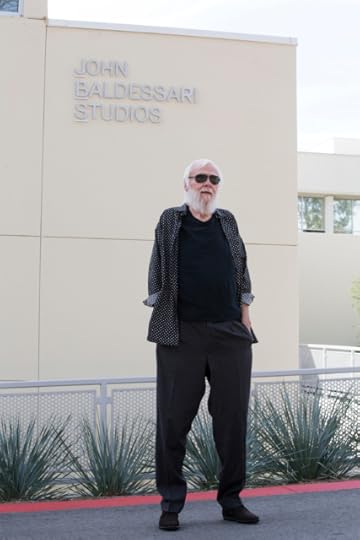
He was not, in the current sense, a ‘walking artist’ but walking sometimes featured in his works, as in Walking Forward-Running Past, 1971(single-channel video, black and white, sound; 12:45 minutes).

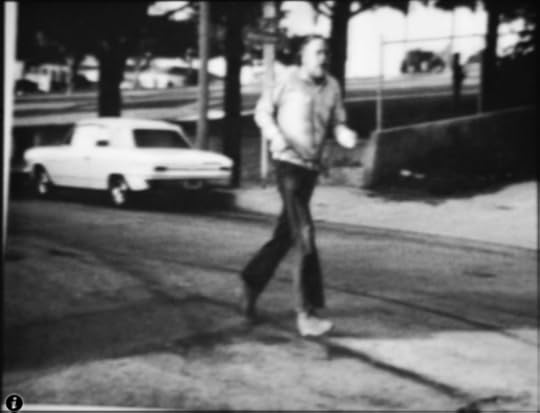
According to the New York Met, it’s a piece in which ‘John Baldessari examines the chronological relationship between still images and motion pictures. The artist constructs a purposefully crude moving image from still pictures of himself walking toward the camera, then running past it. By creating a video with still images, Baldessari urges viewers to question notions of sequence and cinematic time, and how we depict the past, present, and future.’ Well yes.
Another is A Movie: Directional Piece Where People Are Walking, 1972-1973; 22 black and white photographs with acrylic paint on them that looked like this when installed:
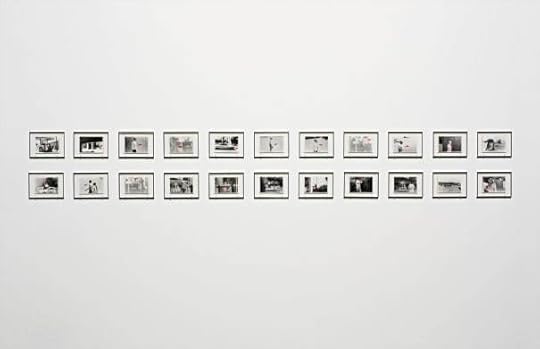
And there’s Walking the Plank, again acrylic on black and white photographs, 1988.
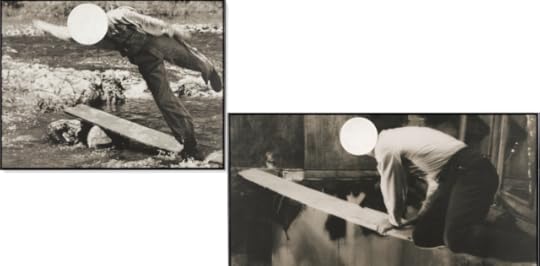
I can’t say that John Baldessari and I had much in common, though we did both teach at Cal Arts, in Valencia, an hour or so up the road from LA. We taught at very different times and with very different results. He was there 1970 to 1986: I was there about 30 years after he left. He was well loved. I was not.
An article by Calvin Tomkins in the New Yorker described one of Baldessari’s artistic strategies. ‘They had a game, in which a student would throw a dart at a map of Los Angeles, and then they’d all go there and spend the day, taking pictures and Super-8 films or videos.’

I assume they drove to the place where the dart pierced the map, but walked when they got there. I have also read, though can’t currently find the source, that Baldessari described this artistic practice as ‘fucking about.’
I think my time at Cal Arts would have been much more enjoyable if I’d done more fucking about. As it was I took things rather too seriously. I did try to incorporate some walking into my pedagogic method, without much success.
However, given how things are these days in American colleges, with students who regard themselves as clients and consumers, determined to get their money’s worth, if you did too much fucking about you’d would get you fired. Probably best just to walk away.


He was not, in the current sense, a ‘walking artist’ but walking sometimes featured in his works, as in Walking Forward-Running Past, 1971(single-channel video, black and white, sound; 12:45 minutes).


According to the New York Met, it’s a piece in which ‘John Baldessari examines the chronological relationship between still images and motion pictures. The artist constructs a purposefully crude moving image from still pictures of himself walking toward the camera, then running past it. By creating a video with still images, Baldessari urges viewers to question notions of sequence and cinematic time, and how we depict the past, present, and future.’ Well yes.
Another is A Movie: Directional Piece Where People Are Walking, 1972-1973; 22 black and white photographs with acrylic paint on them that looked like this when installed:

And there’s Walking the Plank, again acrylic on black and white photographs, 1988.

I can’t say that John Baldessari and I had much in common, though we did both teach at Cal Arts, in Valencia, an hour or so up the road from LA. We taught at very different times and with very different results. He was there 1970 to 1986: I was there about 30 years after he left. He was well loved. I was not.
An article by Calvin Tomkins in the New Yorker described one of Baldessari’s artistic strategies. ‘They had a game, in which a student would throw a dart at a map of Los Angeles, and then they’d all go there and spend the day, taking pictures and Super-8 films or videos.’

I assume they drove to the place where the dart pierced the map, but walked when they got there. I have also read, though can’t currently find the source, that Baldessari described this artistic practice as ‘fucking about.’
I think my time at Cal Arts would have been much more enjoyable if I’d done more fucking about. As it was I took things rather too seriously. I did try to incorporate some walking into my pedagogic method, without much success.
However, given how things are these days in American colleges, with students who regard themselves as clients and consumers, determined to get their money’s worth, if you did too much fucking about you’d would get you fired. Probably best just to walk away.

Published on January 16, 2020 23:57
January 10, 2020
THE REMAINDER WALK
I just read the novel Remainderby Tom McCarthy. I think it’s a good book, I think. I wish it had been a bit shorter but then I think that about most books.If it’s about what it appears to be about, it concerns a man who’s been hit by ‘something falling from the sky,’ and is severely injured, so badly in fact that he has to learn to walk again
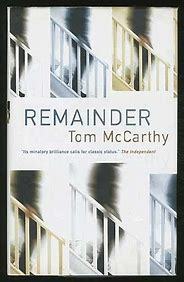
The narrator says, ‘And if you thinkThat’s not so bad: we all have to learn to walk once; you just had to learn it twice, you’re wrong. Completely wrong. That’s just it see: in the normal run of things you never learn to walk like you learn swimming, French or tennis. You just do it without thinking how you do it: you just stumble into it, literally. I had to take walking lessons. For three whole weeks my physio wouldn’t let me walk without his supervision, in case I picked up bad habits.’This is good stuff. It sounds absolutely authentic and believable.
Then the guy’s compensation comes through – eight and a half million quid - and I honestly couldn’t decide whether or not that was really enough money to carry out what he has in mind, even given that he invested it wisely. Essentially he decides to reshape the world, or at least some very specific parts of it, and make it exactly the way he wants it.
In the first instance, this involves searching for a building that he once lived in. The search is long and arduous and he decides to employ some oblique strategies to help him.‘I cooked myself some breakfast and pondered how best to make my search irrational. The first idea that came to me was to I-Ching the map; to close my eyes, turn round a few times, stick a pin in blindly and then go and look in whatever area it happened to have landed on… Colours was the next idea I had: following … I also considered following a numerical system .. Or I could devise a corresponding process using the alphabet… I could …’
The guy has turned into a psychogeographer!!!

I went onlike to look for an author photograph of Tom Mccarthy to illustrate this post. There’s no shortage, and he evidently meets quite a decent class of photography. But in the end what struck me is that he resembles (in some pictures anyway) a rather more stylish Dwight Shrute of the American Office fame. Unforntunately we cannot choose who we resemble.



The narrator says, ‘And if you thinkThat’s not so bad: we all have to learn to walk once; you just had to learn it twice, you’re wrong. Completely wrong. That’s just it see: in the normal run of things you never learn to walk like you learn swimming, French or tennis. You just do it without thinking how you do it: you just stumble into it, literally. I had to take walking lessons. For three whole weeks my physio wouldn’t let me walk without his supervision, in case I picked up bad habits.’This is good stuff. It sounds absolutely authentic and believable.
Then the guy’s compensation comes through – eight and a half million quid - and I honestly couldn’t decide whether or not that was really enough money to carry out what he has in mind, even given that he invested it wisely. Essentially he decides to reshape the world, or at least some very specific parts of it, and make it exactly the way he wants it.
In the first instance, this involves searching for a building that he once lived in. The search is long and arduous and he decides to employ some oblique strategies to help him.‘I cooked myself some breakfast and pondered how best to make my search irrational. The first idea that came to me was to I-Ching the map; to close my eyes, turn round a few times, stick a pin in blindly and then go and look in whatever area it happened to have landed on… Colours was the next idea I had: following … I also considered following a numerical system .. Or I could devise a corresponding process using the alphabet… I could …’
The guy has turned into a psychogeographer!!!

I went onlike to look for an author photograph of Tom Mccarthy to illustrate this post. There’s no shortage, and he evidently meets quite a decent class of photography. But in the end what struck me is that he resembles (in some pictures anyway) a rather more stylish Dwight Shrute of the American Office fame. Unforntunately we cannot choose who we resemble.


Published on January 10, 2020 07:01
January 9, 2020
LOAFING WITH BRYSON

I have nothing against Bill Bryson but I admit I couldn’t make it all the way through his recent book The Body: A Guide for Occupants. There was just too much about death and decay, which reminded me of the death and decay going on in my own body; and frankly I needed no reminding.
But I did read the chapter titled ‘On the level: Bipedalism and exercise’ because it had some stuff in it about walking. Most of it was pretty well known to pedalists such as you and me but I my eye was caught by the information that ‘Today the average American walks only about a third of a mile a day – and that’s walking of all types, including around the house and workplace … According to the Economist, some American companies have begun offering reward to employees who log a million miles a year on an activity tracker suck as a Fitbit. That seems a pretty ambitious number but actually works out to just 2,740 steps a day or a little over a mile,’
Those must very short steps - 1.92 feet per step by my calculations: that is not the step of anybody engaged in actually walking.

But then Bryson was in the Times last weekend saying ‘I’m very active. I walk between 16,000 and 20,000 steps a day.’ I have no reason to doubt him, and nobody believes that walking in itself makes you thin, but I would say he certainly doesn’t LOOK like a man who walks 20,000 steps a day.

Published on January 09, 2020 09:23
Geoff Nicholson's Blog
- Geoff Nicholson's profile
- 55 followers
Geoff Nicholson isn't a Goodreads Author
(yet),
but they
do have a blog,
so here are some recent posts imported from
their feed.



